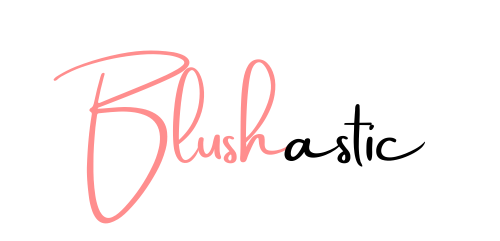Lips have been a symbol of beauty and sensuality for ages. Applying lipstick or utilizing home remedies to give their lips a fuller, more defined appearance are just a few of the ways that women have enhanced the appearance of their lips throughout history. With many cultures equating big, plump lips with youth and attractiveness, lip augmentation treatments have grown in popularity to achieve the desired look.
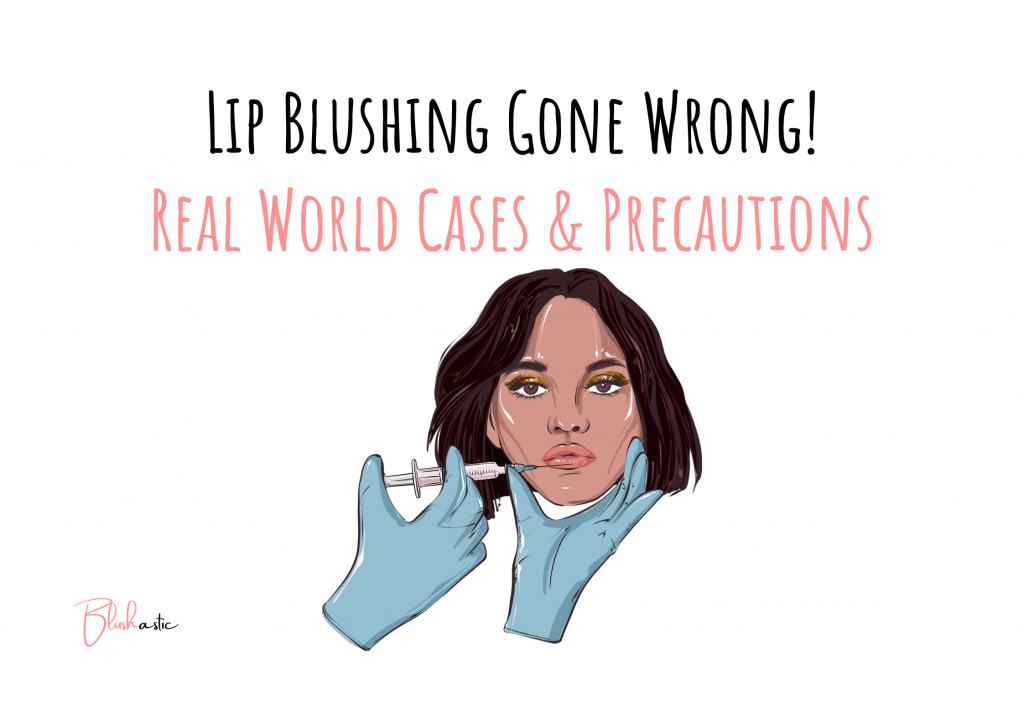
Lip blushing is a cosmetic procedure that guarantees that effortless no-makeup makeup look that women adore. Now your head may be brimming with questions like “What is lip blushing?” and “Is it safe?”. Well, we are here to answer that and more and to discuss the side effects a cosmetic procedure can have. This is the guide for the people whose Lip Blushing Gone Wrong, so let us get to it.
Contents
Lip Blushing Gone Wrong | What Is Lip Blushing?
Lip blushing is a semi-permanent, tattooed makeup that colors your lips with a cosmetic tattoo gun and water-based pigments. It is comparable to lip fillers, which are injections of hyaluronic acid gel that allow you to easily customize how big you want your lips to look. Lip blushing is a semi-permanent tattoo that may improve the size, shape, and color of your lips while giving them a fuller appearance. Color ink is deposited into your lips and along your lip line to boost the overall appearance.
Hyaluronic acid-based lip fillers are a simple way to customize how full you want your lips to look by injecting a gel into your lips. Lip fillers add volume but not color, whereas lip blushing improves lip color and gives the appearance of fuller lips without increasing volume. For a natural-looking color that never smudges or fades, semi-permanent lip blushing fills lips with small spots of pigment (organic or inorganic natural pigments or cosmetic tattoo ink). It is a simple method for giving the lips dimension, definition, and depth without constantly touching them up with the product. Lip fillers can be applied over flushed lips since they increase volume but no color.
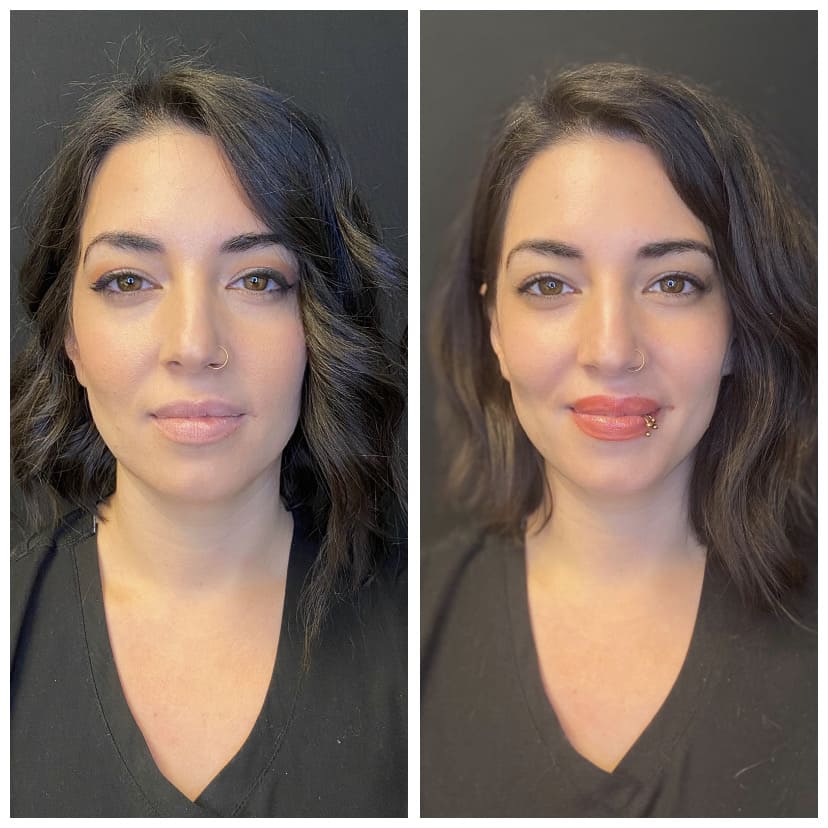
Not everyone requires both procedures, according to Dendy Engelman, MD, a board-certified cosmetic dermatologist and Mohs surgeon at Shafer Clinic in New York City. Only a physician can evaluate each patient’s needs individually. Whether you decide to use lip filler with blush, always do the blushing first to see whether you need more volume.
About The Procedure
A licensed tattoo artist or esthetician can execute the lip-blushing treatment. The technician will go over their plan of action and make any necessary modifications or adjustments before starting the procedure, which has a low amount of discomfort. It entails applying a numbing lotion to the lips, drawing the form with a white pencil and gel pen, then tattooing the contour of the lips before filling in the center. Following the tattoo, the artist will apply a calming moisturizer to the client’s lips and go through aftercare instructions with them. The patient can feel edema, redness, and possibly bruising following the procedure.
The patient should use ice or a cold compress to decrease swelling, refrain from smoking, and inform the technician in advance if they have ever had cold sores. The patient should adhere to any aftercare instructions they are given since there is a small possibility that they might get an infection. The ultimate outcomes might be visible after up to four weeks.
General Aftercare Rules
Lip blushing has a comparable healing process as tattoos. Don’t be alarmed if the lips seem bright and stained shortly after the visit. After four weeks, the color will dwindle by up to 50% and gradually meld with your lips. For the duration of the healing process, a healing balm should be administered two to three times daily.
During the healing process, it’s vital to avoid doing things like adding lipstick on top of the lip blush, sitting in the sun for a week, going to the gym, getting your lips wet, eating salty or spicy food, and kissing for up to seven days. These safety measures are required to protect against infections and guarantee that the lips recover properly. Using a lip balm that the doctor has prescribed is essential for keeping the lips moisturized.
How Long Does Lip Blushing Last?
Lip Blushing lasts for two to three years before gradually fading and lightening. To maintain the lip color, many tattoo artists advise yearly touch-ups; however, individual results may vary. Smoking and exposure to the sun can hasten the fading of the color.
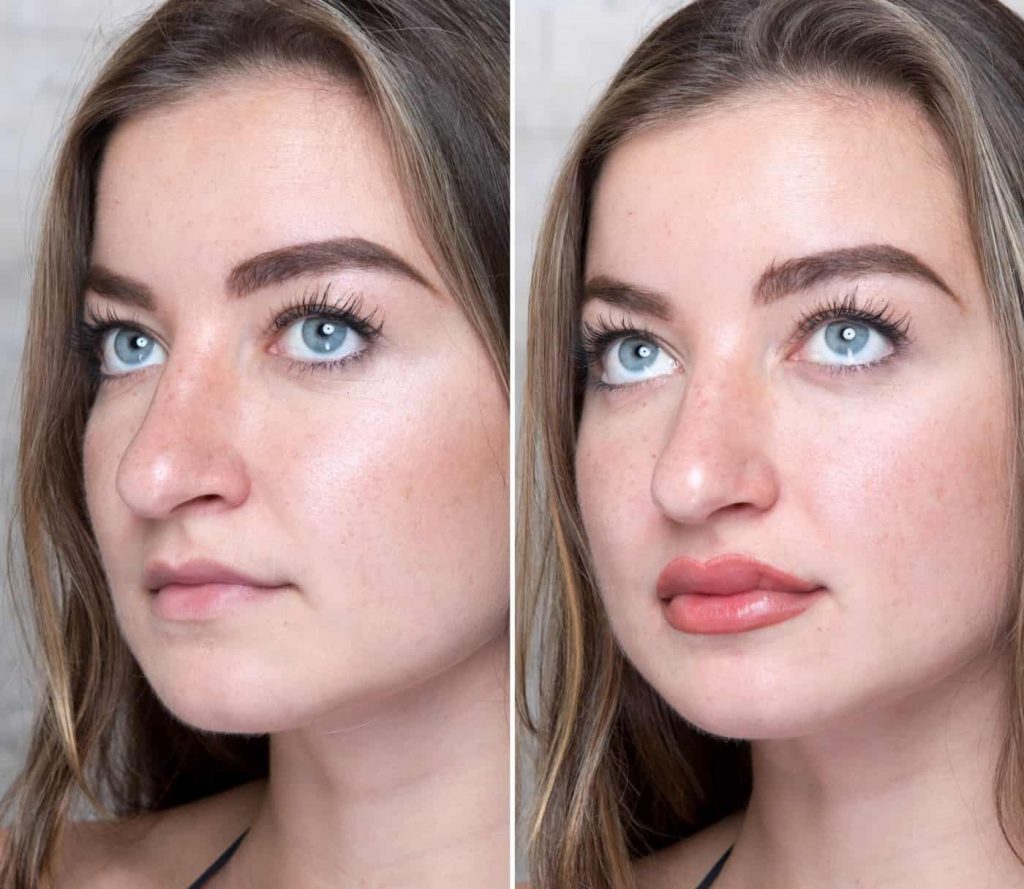
In order to maintain the effects, lip blushing must be done periodically, but once the effects are established, they are difficult to undo. Depending on where you reside, services might run you anywhere from $500 to $1,500 for each session.
Who Is A Good Candidate For A Lip Blushing Treatment?
Lip blushing is a well-liked beauty procedure for lips of various ages, hues, densities, and forms, particularly asymmetrical ones. There are some exceptions to the norm, though, and a few things to think about. For instance, to prevent an outbreak, if you have precancerous lesions or spots, ask your doctor for a prescription for an antiviral drug like Valtrex.
Additionally, potential customers should inquire in advance about any sensitivities they may have to any of the chemicals or equipment that will be piercing their skin. Additionally, those with dark lips or dark brown patches, those using drugs that make individuals more sensitive to the sun, such as Retinol, Retin-A, and vitamin A, as well as those who have had lip filler, must wait until four weeks after the injections before getting a lip blush.
Is Lip Blushing Safe?
When done by a trained and experienced expert, lip blushing is a safe procedure. It’s crucial to discuss your skin history with your artist in advance to ensure the best and safest outcomes. A semi-permanent tattoo, however, is just as safe as the artist makes it, so it’s crucial to be sure the expert is prepared to manage any potential issues.
General post-treatment effects | Lip Blushing Gone Wrong
In the first two days after lip blushing, there is swelling and pain; then, there is peeling and itching for a few days. Although the skin reacts, any negative effects are minor and unharmful. Read on to get an idea of what to expect immediately after a Lip Blushing procedure.
Redness
The small needles used in the lip-blushing process might produce minor redness and slight bruising. Since the skin surrounding the lips is so delicate, this is the case.
Swelling
In order to mitigate the effects of the needling, our body sends lymphatic fluid to the area where the skin of the lips is damaged during the lip blushing technique. The swelling of some people’s lips may be greater than that of others, and it may last longer. The swelling should go down within 48 hours after the treatment is finished as the body becomes aware that there is no risk left. It could indicate issues if it doesn’t. Inflammation will happen each time the body’s immune system is triggered by something it perceives as a danger. The likelihood that the lips may swell significantly increases with the strength of the immunological response.

Tenderness
Lip skin is more sensitive to permanent makeup than the skin on the rest of the face because it is thinner and more fragile. In order to make the lip-blushing procedure more comfortable, topical anesthetics are employed; nevertheless, their effects only last for a few hours. Tenderness can manifest itself in a variety of ways for clients, including sensitivity, throbbing, tightness similar to a sunburn, and minor pain the remainder of the day and possibly the next day.
Flaking
Lips that have recently been needled begin to ooze lymph and blood, which develops into a thin, filmy covering of scabs. The outermost layer of the lips’ skin is also harmed by needling, which results in flaking and peeling of the skin. It’s crucial to avoid ripping off any skin flakes that may dangle from the lips because doing so may remove part of the applied colors. Similar to when someone gets a tattoo, a little oozing is a typical healing response to lip blushing. During the healing process, which shouldn’t take longer than a few hours, this lymph will crust over.
Itching
Since itching is brought on by the stimulation of epidermal nerve endings, itching is a typical aspect of wound healing. A little itching is a sign that the skin is mending and generating new cells. Extreme itching, however, is not typical and might be a sign of something serious.
Complications and Long-Term Effects | Lip Blushing Gone Wrong
Having a lip blushing procedure done has several risks, in addition to the fact that some people experience extreme discomfort. If left untreated, some of these issues might result in deformity or permanent scarring. Let’s examine some of the lip blushing treatment’s more worrisome aspects.
Dissatisfactory Results
The operation not producing the expected or intended outcomes is the most prevalent problem of lip blushing. This might indicate that the color turns out incorrect or patchy, the lip contour is less precise, the shape is incorrect or overemphasized, it was too painful, the wound did not heal completely, or any number of other problems that could make you unhappy with the results.
As Lip Blushing lasts a couple of years and removal is rather difficult, it’s crucial to investigate the technique and the operator, ask all of your questions, and perform a patch test before every treatment to avoid an unsatisfactory result. Selecting the ideal lip blush shade will enhance your natural lip color and harmonize with your skin tone. Prior to selecting a choice, it’s necessary to take the situation, your preferences, and the artist’s experience into account.
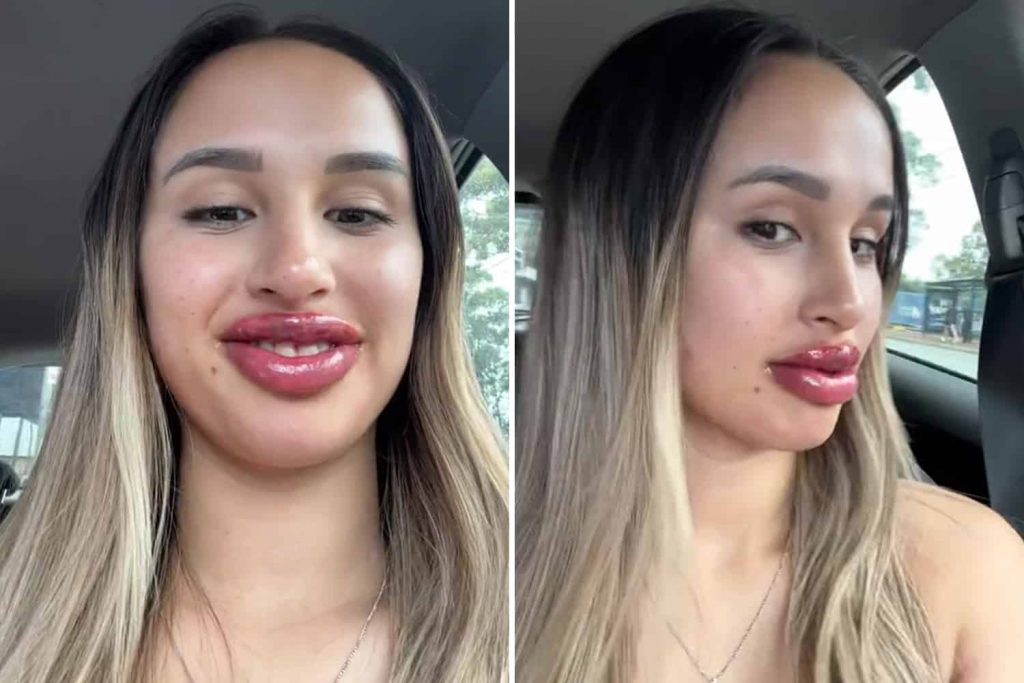
The color not fading
Tattoos on the lips should never extend past the vermillion border, which is the line where the skin of the lips and the skin of the face converge. This is due to the fact that the rate of pigment fading on the skin of the lips and the face differs, making it extremely difficult to get the two inked regions to mix and have an equal color.
The pigments in the lips are likely to have faded over time, but the lip line will likely remain quite evident and have developed a color that makes it seem artificial and difficult to conceal with cosmetics. The problem would be significantly worse if the lip liner tattoo were applied using regular tattoo ink rather than permanent makeup(PMU) pigment.
Development of Cold Sores/Blisters
During lip tattooing, blisters might develop, which can delay the procedure and make the healing process more difficult. If you have a history of the herpes simplex virus, it’s crucial to refrain from flushing your lips since cold sores may be an indication of the virus.
Use gentle and moderate permanent makeup equipment, practice good aftercare, and stick to the cream the technician recommends to prevent the chance of cold sores. Cold sores should be prevented by taking antiviral medication, and the treated area shouldn’t be massaged, distressed, touched, or picked at.
Infection
Tattooing supplies and needles that have been exposed to tainted ink can spread infectious diseases, including hepatitis and skin infections brought on by Staphylococcus aureus and other germs. You might not be eligible to donate blood or plasma for a year if you have tattoos that were done in places that aren’t subject to state regulation, use repurposed ink, or use unsterile equipment. Even when the tattoo artist took all necessary hygienic procedures, contaminated tattoo inks have nonetheless led to illnesses.
Lip infections have the potential to spread, deteriorate, or transform into potentially fatal facial fasciitis, an infection that is rapidly advancing in the soft tissue of the face. In order to avoid contracting an infection, it’s crucial to make sure that the tools being used on you are sterile and not being reused and the area is clean.
The technician is taking all the necessary sanitary precautions, the skin is adequately cleaned and prepared, the pigment being used comes from a sealed, unused container, and the lips are kept clean and cared for as directed after the procedure.
Allergic Reactions
Although the FDA has received several reports of adverse effects from certain ink colors used in permanent and semi-permanent cosmetics, allergic responses to tattoo pigments have been rare. Even long-term tattoo wearers occasionally experience a negative reaction to them. In the worst-case scenario, anaphylaxis (a life-threatening response that drives the body into shock) may manifest as an allergic reaction in the form of a rash, bumps, swelling, or any of these symptoms.
It is crucial to consult with a dermatologist or physician for medical advice on managing and avoiding allergic reactions. Go as soon as you can to the closest emergency room if symptoms are rapidly worsening or if there are any indications of anaphylaxis. It is recommended to perform a few patch tests before going full force in order to prevent allergic reactions.
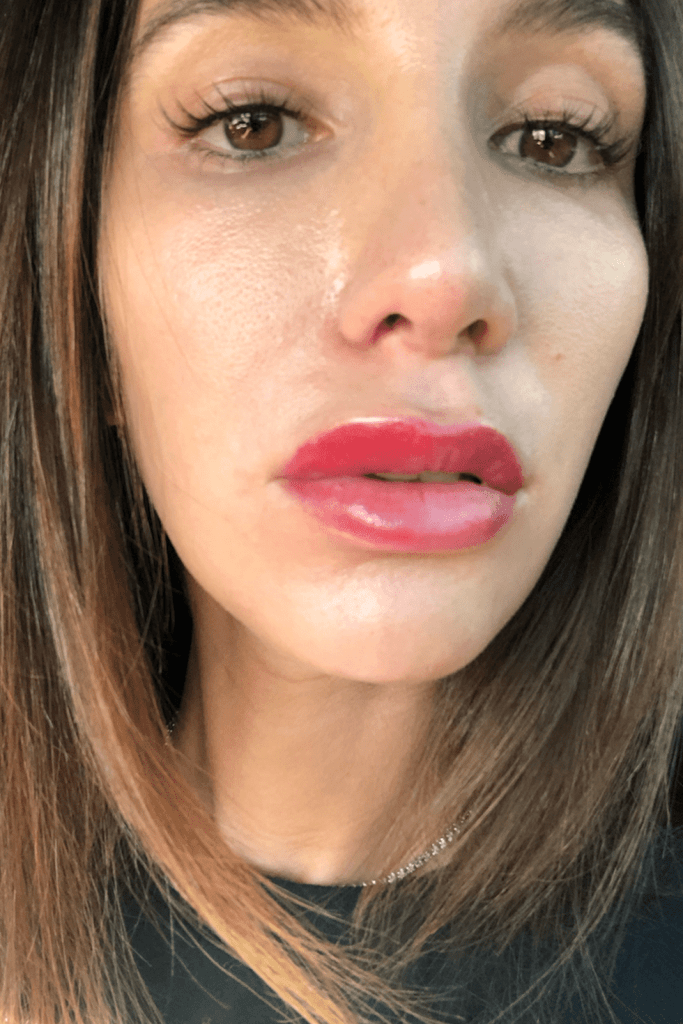
Granulomas
Granulomas from lip blushing are an uncommon adverse response to darker inks or pigments. Steroids used topically or administered intravenously, as well as laser ablation, may be used in the course of treatment.
Patch testing is the only method for detecting and preventing granulomas, and it may take weeks or months for granulomas to appear following the procedure. Patch testing might not be sufficient to prevent granulomas, and it is doubtful that anyone will put off lip blushing for so long following a patch test.
Keloid Formation
If you are prone to keloids, which are scars that enlarge beyond their normal limits, getting a tattoo puts you at risk of developing them. Keloids can form whenever your skin is damaged or distressed, but they are uncommon to appear on your lips as a result of lip blushing unless you already have a history of this type of scarring.
Keloids should be examined and treated by a dermatologist as soon as possible in order to manage and avoid them. Keloid forms are unfortunately unavoidable owing to chance and heredity.
Complications in Future MRI Scans
In the future, MRI techniques may be complicated by lip blushing. After receiving magnetic resonance imaging (MRI), some people with tattoos or permanent/semi-permanent cosmetics, such as lip blushing, have reported suffering swelling or burning in the affected areas. Additionally, it has been shown that pigments might degrade the clarity of MRI pictures.
However, the risks of postponing an MRI are probably greater than the likelihood of complications from an interaction between an MRI and a tattoo or permanent makeup. Instead of skipping an MRI because of tattoos or permanent/semi-permanent makeup, you should disclose this information to the radiologist or radiologic technician.
(The information in the section above is sourced from below
- Lip Blushing Side Effects – Healthline
- Tattoos & Permanent Makeup – FDA
- Granulomas
- Cold Sore After Lip Tattoo
Real World Cases | Lip Blushing Gone Wrong
As rare as they may be, it is worth looking at some real-world examples of failed cosmetic procedures.
Case 1
Karine Barry, who began obtaining semi-permanent lip tattoos in her 20s, was a major lover of lip liners and permanent tattoos. She traveled to Tahiti, where Polynesians are frequently regarded as the greatest tattoo artists in the world, after deciding one day that she wanted something more permanent than a temporary tattoo. Karine was skeptical until her selected tattoo artist began to describe the lip tattoo procedure.
Informing her that it would first become green but gradually turn burgundy, he started blending blues, greens, and a tiny amount of pink. However, Karine trusted her tattoo artist and gave the go-ahead. Karine had green lip lines after paying 250 bucks and waiting 30 minutes.
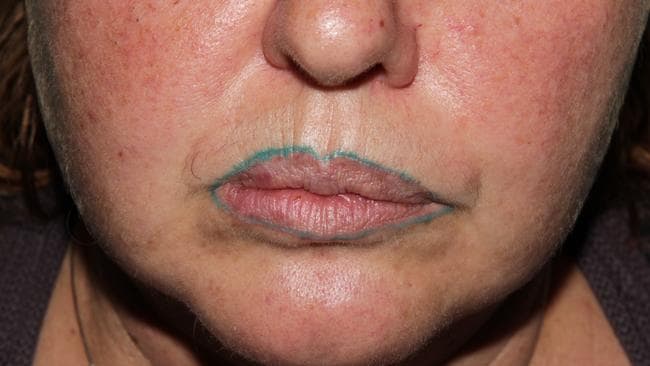
Karine represented a significant company back home and had a lip tattoo gone awry, so her buddy suggested she have it removed with laser surgery. Her whole bottom lip liner was entirely removed by the dermatologists after just one session, and the remaining portion was removed after three more sessions. Karine felt relieved that she would no longer have to maintain that appearance.
The lesson is that you may avoid this problem altogether by investing a few minutes of your day in finding a solution. Karine acknowledged that she hadn’t done any research on her tattoo artist, but if she had, she might have been able to prevent her lip tattoo mishap.
(Detailed article about the Karine Barry case)
Case 2
A writer named Tanya Akim discusses her experience with lip-blushing gone wrong. Before booking a session with a permanent makeup artist, Akim researched and talked to friends who had already experimented with lip blushing. The artist used topical lidocaine to numb Akim for 45 minutes before gently tracing over the whole surface area of her lips, including the borders.
The first warning indicator is discomfort since it indicates that the artist is probably pushing themselves too far. The narrator also discovered that the procedure only affects the dermis’s outermost layer, so if they feel discomfort, the artist is probably pressing too firmly and going too deeply. The narrator was in so much anguish that they were considering bailing out.
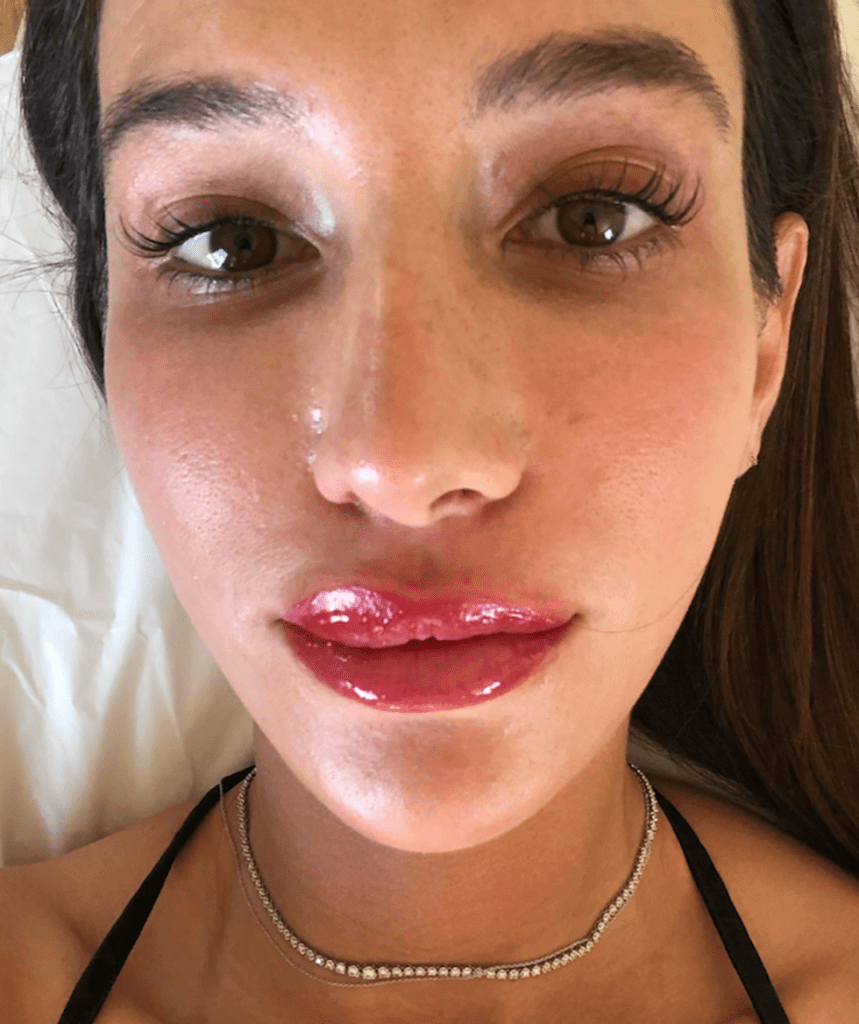
The narrator underwent a permanent cosmetic procedure, and the right side of their upper lip was so swollen that it appeared they were experiencing a serious allergic reaction. The artist reassured the narrator that everything was normal and gave them a special ointment to use at home in case they had any dryness or shedding.
The third warning sign was that the makeup artist suggested giving the lips more color. Jonathan Cabin, MD, a board-certified plastic surgeon, counseled the author against trying to cover up unflattering lip blush with more tattooing. Although it has been over a year, the author is still waiting for the pigmented areas on their lips to vanish.
(Detailed article by Tanya Akim)
Possible Solutions
There are now highly efficient techniques to erase a lip liner tattoo that has gone awry, which is a blessing. Lip liner tattoos that are unwanted or poorly done can be erased. The best techniques for getting rid of lip liner tattoos are listed here, including laser removal and saline solution removal. Before attempting any of these techniques, it is necessary to speak with a specialist.
Laser Removal
The preferred method for tattoo removal is laser therapy; however, there is a caveat. Titanium dioxide, a pigment frequently used in lip tattoos, becomes gray when exposed to laser light. This can be further eliminated using laser or non-laser methods, but you might need to go about your life with the gray tint on your lips until the procedure has successfully removed the pigment. With the least chance of leaving scars and causing tissue damage, laser removal is the safest method. To get the desired outcomes, it may, however, cost more and take more sessions. Furthermore, some individuals could feel discomfort while the treatment is being done.
Non-Laser Removal
Non-laser pigment removal techniques entail using a PMU machine with a needle to prick open the skin above the undesirable color. A unique solution to eliminate pigment is injected into the skin once it has been opened. As the skin wounds heal, a piece of the pigment is taken after the solution has lifted it.
The lip liner tattoo that went awry can be removed throughout 2 to 10 sessions, but there is a larger chance of tissue damage. Conducting your homework and picking a trustworthy professional that only utilizes sterilized tools is crucial. To reduce the danger of problems and guarantee appropriate recovery, it’s also advised to meticulously adhere to the aftercare guidelines.
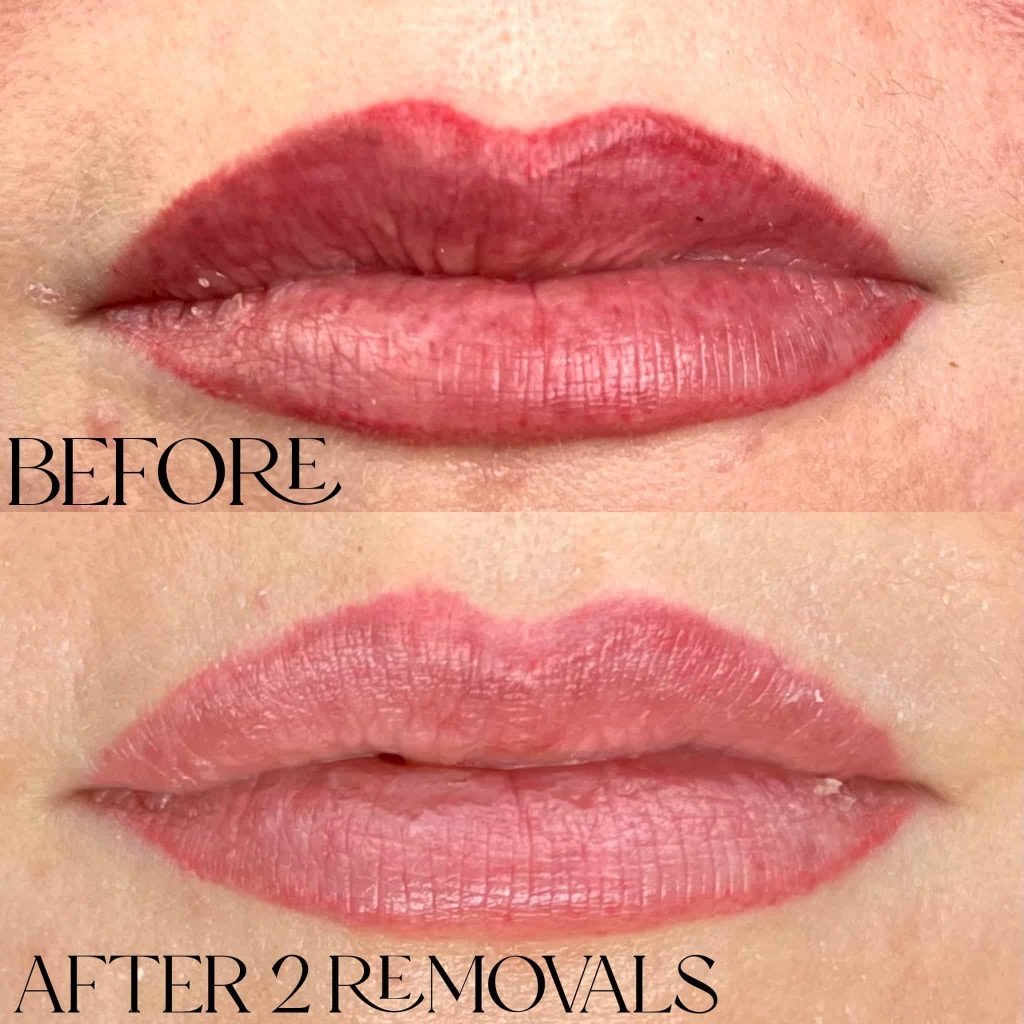
Saline Solution Tattoo Removal
A lip blushing tattoo can be removed with the saline lip blushing removal technique by soaking the tattoo in a sterile salt water solution. The pigments break down, and the tattoo fades as a result of the solution being administered to the inked region. It is a painless alternative to laser treatment that is safe for most skin types.
Different tattoo colors can be removed from the skin because it is not color-specific. Contrary to lasers, which split ink into tiny particles and leave it for the body to eliminate, saline solutions remove ink from the body. After healing from saline tattoo removal, you can have another tattoo over it in the same location.
Dermabrasion
Dermabrasion is a mechanical exfoliating procedure that physically abrades the skin’s surface by removing the top layers of skin using a motorized brush or diamond-tip wand. Scars from acne and other skin flaws are typically treated with it. However, because the pigments used in lip blushing tattoos are put deeper in the skin than the top layers that are removed during dermabrasion, it is useless to eliminate them.
Furthermore, dermabrasion can seriously harm the sensitive skin of the lips, resulting in scars, discoloration, and other long-term problems. In addition, it is more intrusive and uncomfortable than other methods like laser tattoo removal or saline removal.
How to get the best out of your Lip Blushing appointment?
The semi-permanent lip procedure known as a lip blush tattoo has few negative effects if administered carefully. It gives everyone the ideal pouty lip appearance and makes the lips appear larger and plumper. It may be readily repeated in a single session and lasts for more than a year or two.
It may be completed in one to three hours, giving any skin tone a natural appearance and an instant comprehensive lip makeover. So if you want to go for the procedure, then we can’t blame you. And with all the information provided we are sure that you will take all precautions into consideration. Here are a few things to keep in mind, regardless.
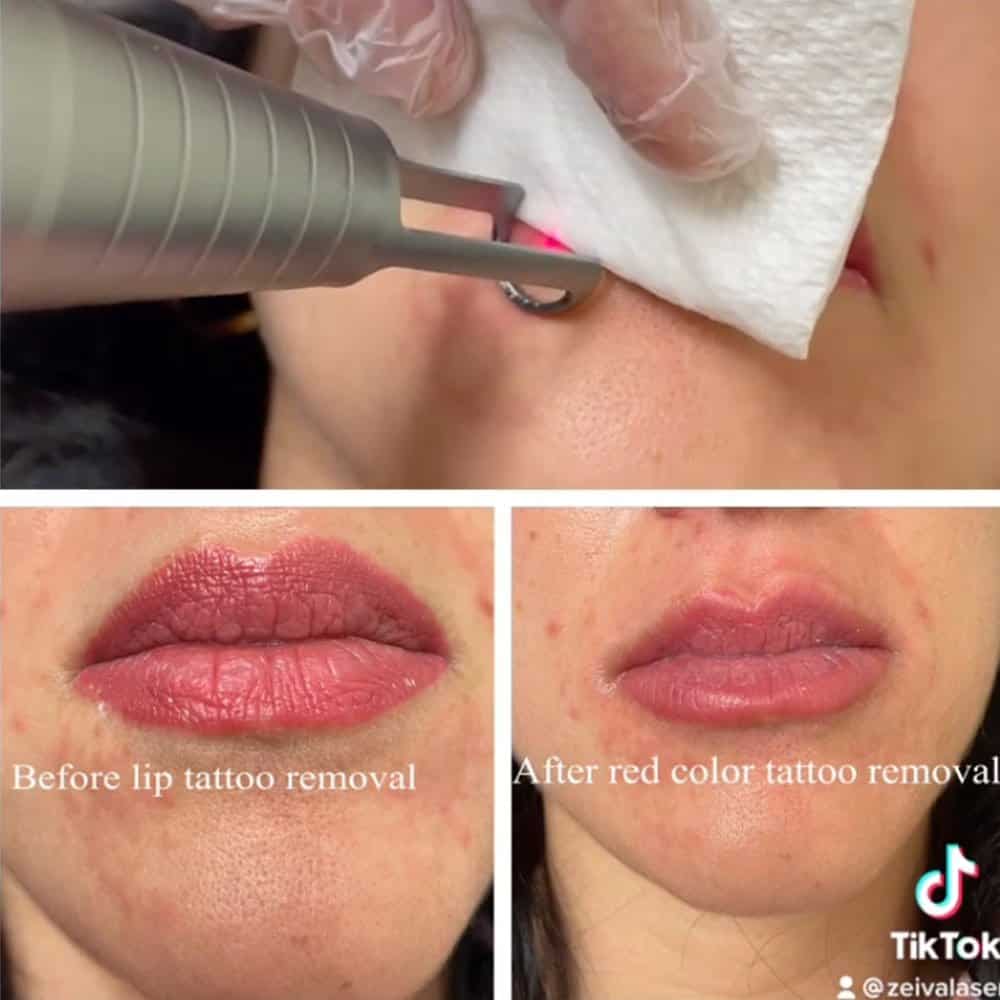
- Although lip blushing is expensive, it is completely worth it. The price per session ranges from $500 to $1500, and some studios provide discounts or packages for numerous sessions. Before choosing, carefully enquire about their prices and weigh them against those of the competition.
- Because the lip blushing market is cutthroat, it’s crucial to only collaborate with the finest. Most studios and artists have websites or Yelp reviews where customers may leave feedback and social media profiles where you can compare before and after photos. Doing this can make you confident that you’re hiring the best.
- Getting to know the artist working with you while selecting a salon or studio is crucial. You’ll feel more at ease and be able to ask any questions you may have as a result.
- Be honest and transparent with the artist while discussing the lip blushing procedure. Inquire about the duration of the operation, the number of sessions required for the best outcomes, the shade, and any potential side effects. It’s better to be on the same page because the results will last for a year or two.
FAQs | Lip Blushing Gone Wrong
Does lip blushing appear fake?
Lip blushing might look false if not done correctly; therefore, you must do your homework and contact a professional. Additionally, the surgery may cause a flare-up if you have a history of cold sores or herpes.
Can lipstick be used over lip blush?
After 10 days, you can use lipstick, lip gloss, and chapstick; just make sure the tube is brand-new. Slightly elevating your bed while you sleep helps reduce puffiness. Using a satin pillowcase and lying on your back while you sleep is advised.
How do you get ready for lip blush?
Prior to applying lip blush, lips must be moisturized and smooth. To do this, prepare a sugar scrub at home three to four nights before the appointment and again the morning of. Lips should be scrubbed for two to three minutes; then, the excess should be removed.
Does lip blushing reduce wrinkles?
Lip Blushing works by injecting color into the skin’s nano-punctures, which promotes the production of collagen and reduces the appearance of wrinkles around the lips.
How often do you need lip blush topped up?
Six to eight weeks following the treatment, a follow-up appointment is required to add more color and fill in any voids where the pigment is deficient.
Has the FDA authorized lip blushing?
Before undergoing cosmetic procedures, patients should confirm that their practitioner utilizes sterile tools and has the necessary education and expertise, as the FDA does not regulate them.
Takeaway | Lip Blushing Gone Wrong
Lip blushing is a type of tattooing that may be used to get lips that are more defined and toned. It is not the only anti-aging lip treatment available; thus, discussing any problems with a dermatologist is crucial. If lip blushing is the best choice, engage with a trustworthy, licensed supplier who will go through any hazards involved. Immediately contact a doctor if you have any adverse effects following the operation.
Technology advancements have made these operations safer and more accessible, but before undertaking any cosmetic surgery, it is crucial to thoroughly assess the risks and probable adverse effects. Let us know if lip blushing is something you would explore. Your visit means a lot to us.
Found this insightful? Here are more such reports:
- Shaving My Face Ruined My Life | 3 Cases (Experiences)
- Lash Lift Gone Wrong | 3 Cases with Detailed Analysis
I’m Sarah Abraham, the founder and co-author of Blushastic.com and a professional makeup artist. Beauty is more than just skin deep, and that’s why I’m passionate about sharing my knowledge and experience to help people feel confident and beautiful on the inside and out.
Whether it’s skincare, haircare, or fashion, my goal is to empower women to feel their best. With my expertise in the beauty industry, I strive to provide practical advice and tips that are accessible to everyone, regardless of their skill level or budget.
